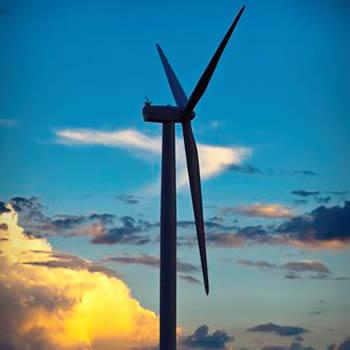 The Vineyard consumes a disproportionally high amount of energy because of the nature of our buildings and settlement pattern. It costs a lot more to heat a single-family dwelling with four exposed walls and a roof, than an apartment that loses heat only through one exterior wall. And our low-density housing, spread across the Island, means that we have a much higher proportion of people who drive compared to an inner-city neighborhood where people can more easily walk, bike, and take transit.
The Vineyard consumes a disproportionally high amount of energy because of the nature of our buildings and settlement pattern. It costs a lot more to heat a single-family dwelling with four exposed walls and a roof, than an apartment that loses heat only through one exterior wall. And our low-density housing, spread across the Island, means that we have a much higher proportion of people who drive compared to an inner-city neighborhood where people can more easily walk, bike, and take transit.
As of 2005, the Vineyard used approximately 4.3 trillion BTUs of energy annually, equivalent to 757,000 barrels of oil, or three-quarters of a 1,000-foot supertanker.
We use about 30% of this energy for heating and cooling our buildings, 33% for electricity for lighting, appliances, and machinery, and 37% for transportation. Our principal energy fuels are oil, propane, and gasoline, as well as electricity generated primarily from the source fuels (in decreasing order of magnitude) natural gas, nuclear, coal, and oil. Most of the cordwood burned for heat comes from off-Island. The generation of electricity on-Island from small wind turbines and various solar systems does not yet produce a meaningful percentage of our energy needs.
Challenges
-
With respect to cost, the Vineyard has a large and steadily increasing annual energy bill (more than $64 million in 2005). Our energy costs are among the highest in the United States. Since more than 99% of our energy is produced off-Island, so these expenditures leave our local economy. Both the Vineyard’s year-round community and visitor-based economy are sensitive to high energy costs and disruptions to the energy supply.
-
With respect to the environment, fossil fuels are our major source of energy. There is general scientific agreement that burning fossil fuels produces carbon dioxide that is influencing the earth’s atmosphere and contributing to rapid climate change. Burning these fuels results in air and water pollution and emissions, which endanger health and contribute to climate change. Annual carbon dioxide emissions attributable to the Vineyard were 329,000 tons in 2003 and will rise to 457,000 tons by 2050 if we take no new action. The Vineyard is particularly vulnerable to effects of climate change such as rising sea levels, more frequent and severe weather events, and health risks from insect-borne diseases. Importing our electricity from distant power plants means that a substantial amount of power is wasted in the conversion of source fuels into electricity and in transmission losses; it takes about three units of energy at the plant to produce one unit on the Vineyard.
-
With respect to reliability, foreign fuel sources are increasingly insecure and unstable and may subject the community to supply shortages and price fluctuations beyond our control. The fact that we have to bring energy to our shores results in higher risks. Fuels are shipped to the Island by ferry or barge, subjecting the Vineyard to shipping-related issues. Electricity is brought to the Island by four 23.2-kilovolt underwater cables that are vulnerable and hard to repair, and the Vineyard’s 50-megawatt peak electricity usage level is fast approaching their 62.5-megawatt capacity; the cost of additional cables will be high and will be borne by all.
Improving Energy Efficiency and Renewable Energy Production
The Island Plan suggested the goal of ensuring that the Vineyard community has reliable, secure, ample, affordable, and environmentally sound energy supplies and that it obtains as much of its energy as possible from sources that are renewable and, increasingly, local. It suggested a target of cutting projected energy use by half using efficiency measures for buildings and transportation, and producing or offsetting the rest, mainly from community-owned facilities. (This would be the equivalent of about fifty, 500-foot-high offshore wind turbines).
MVC Initiatives
Ferries Now - Presentations - Watch Now
|
|
Thanks to all who attended this wildly successful event to discuss electric ferries. Organized by the MVC's Kate Warner the MVC is grateful to all our presenters for their participation. The video for the full event (3 hours plus) is available via this YouTube link. 6 PDFs of Presentations: Denmark, Elliott Bay & SSA's Propulsion Study, Eversource, Maine Casco Bay, SSA, Washington State Ferries
posted 4/4/2023 |
- Federal Offshore Wind Energy Development: MVC and Town representatives have played an active role as members of the Massachusetts Task Force, working with the federal Bureau of Ocean Energy Management to plan a huge offshore industrial scale wind farm. The MVC has promoted protection of aquatic and avian environmental resources, consideration of fishing and boating needs, and reducing the impacts on scenic values by ensuring that development is set back at least 12 miles from the shore.
- Wind Energy Plan for Dukes County: In 2013, the MVC adopted a wind energy plan that analyzes the potential impacts of wind energy development on land and in the waters of Dukes County and proposes guidelines for future development.
- Island Wind DCPC: In 2009, the MVC designated the Island Wind District of Critical Planning Concern to provide the framework for regulation of wind turbines by Island towns. It was subsequently modified to reflect the recommendations of the Wind Energy Plan for Dukes County.
- DRI Policy on Energy and Environmental Building: In 2008, the MVC adopted this policy for the review of proposed Developments of Regional Impact.
Other Initiatives
- Cape Cod Light Compact: The Cape Light Compact is an inter-governmental organization consisting of the 21 towns and two counties on Cape Cod and Martha’s Vineyard whose mission is to serve its customers through the delivery of proven energy efficiency programs, effective consumer advocacy, competitive electricity supply and green power options. It has assisted towns, businesses and individuals with education and testing of energy efficiency and provided funding for upgrades. It works in collaboration with the Cape & Vineyard Electric Cooperative.
- The Vineyard Power Cooperative: was formed to catalyze interest in community-scale production of renewable energy. It worked at two scales: with towns, businesses and individuals to help develop and implement local solar projects, and with state and federal agencies to ensure opportunities for Vineyarders to benefit from industrial-scale wind generation projects being explored offshore near the Island. It is responsible for the solar installation at Cronig’s.
- Municipal Solar Installations: Several towns are working with the Cape and Vineyard Electric Cooperative on solar installations to supply renewable energy for municipal use. Edgartown installed panels at Katama Farm and West Tisbury has installed them at the town landfill.
- Town Energy Codes: Tisbury has adopted the Massachusetts Stretch Energy Code, which provides for stricter construction standards than the regular building code.


